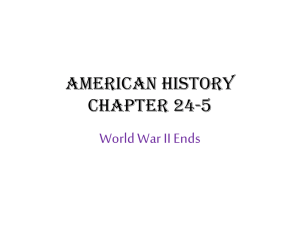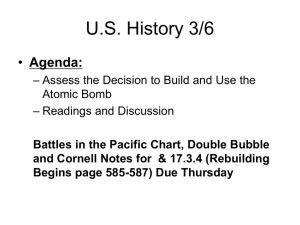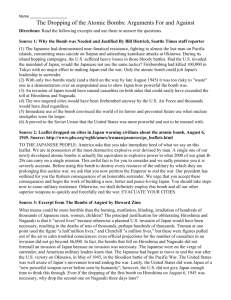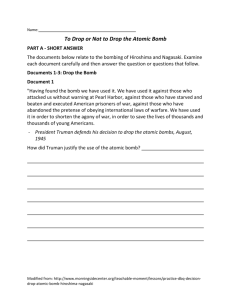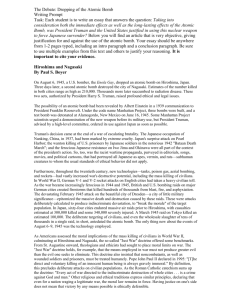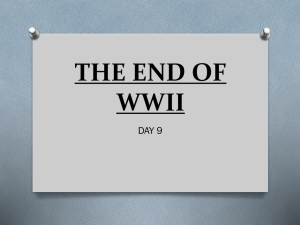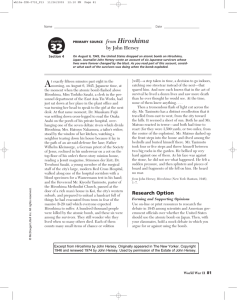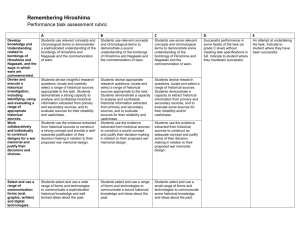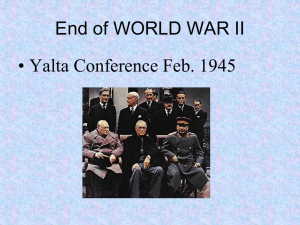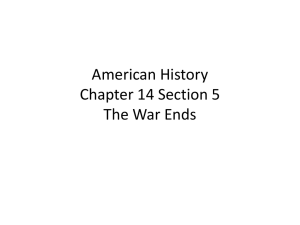august-6-1945
advertisement
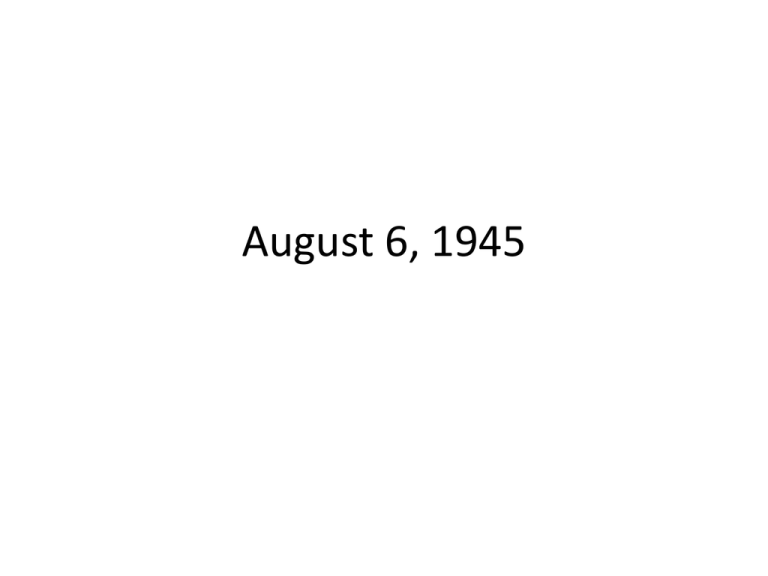
August 6, 1945 Background… • During the final stages of World War II in 1945, the United States conducted two atomic bombings against the cities of Hiroshima and Nagasaki in Japan, the first on August 6, 1945 and the second on August 9, 1945. These two events are the only use of nuclear weapons in war to date. • For six months before the atomic bombings, the United States intensely fire-bombed 67 Japanese cities. Together with the United Kingdom and the Republic of China, the United States called for a surrender of Japan in the Potsdam Declaration on July 26, 1945. The Japanese government ignored this ultimatum. The Effects… • Within the first two to four months of the bombings, the acute effects killed 90,000–166,000 people in Hiroshima and 60,000–80,000 in Nagasaki, with roughly half of the deaths in each city occurring on the first day. • The Hiroshima health department estimates that, of the people who died on the day of the explosion, 60% died from flash or flame burns, 30% from falling debris and 10% from other causes. • During the following months, large numbers died from the effect of burns, radiation sickness, and other injuries, compounded by illness. • In a US estimate of the total immediate and short term cause of death, 15–20% died from radiation sickness, 20–30% from flash burns, and 50– 60% from other injuries, compounded by illness. In both cities, most of the dead were civilians. • Six days after the detonation over Nagasaki, on August 15, Japan announced its surrender to the Allied Powers, signing the Instrument of Surrender on September 2, officially ending the Pacific War and therefore World War II. The Enola Gay • Enola Gay is a Boeing B-29 Superfortress bomber, named after Enola Gay Tibbets, mother of pilot Paul Tibbets. • On 6 August 1945, during the final stages of World War II, it became the first aircraft to drop an atomic bomb as a weapon of war. The bomb, code-named "Little Boy", was targeted at the city of Hiroshima, Japan, and caused extensive destruction. Paul Tibbets = Pilot Plane that dropped bomb on Hiroshima – named after pilot’s mum In the Enola Gay five minutes before impact he whistles a dry tune Sense of anticipation for reader Reflects his unease Simile –positive image contrasts with deadly bomb Contrasting words – range of emotions Later he will say that the whole blooming sky went up like an apricot ice. Later he will laugh and tremble at such a surrender, for the eye of his belly saw Marilyn’s skirts fly over her head for ever Personifies the plane Metaphor for the mushroom cloud Onomatopoeia to bring nature to life On the river bank, bees drizzle over hot white rhododendrons Contrast between innocence of nature and heat of explosion Could represent all child victims bloodied Later she will walk the dust, a scarlet girl with her whole stripped skin at her heel, stuck like an old shoe sole or mermaid’s tail Similes to describe her peeling skin And “dust” in last stanza – words of death Simile to show how their burnt skin sheds Later she will lie down in the flecked black ash where the people are become as lizards or salamanders and, blinded, she will complain: Mother you are late, so late The flash of the explosion was blinding Links to last verse – he has a later , she doesn’t Later in dreams he will look down shrieking and see ladybirds ladybirds Metaphor to show the black and red of burnt bodies Or linked to children’s rhyme: Lady bird, ladybird fly away home, Your house is on fire, your children are gone Links to other poems… Violence / War: Invasion, Conscientious Objector, the Drum, O What is that Sound?, Belfast Confetti, Our Sharpeville, Hitcher, Exposure Actions against other others: Hitcher, Parade’s End, O What is that Sound?, Exam Questions… Explain how Fell uses imagery, vocabulary and form to convey the horror of a nuclear attack. Use examples from the poem to support your answer.

